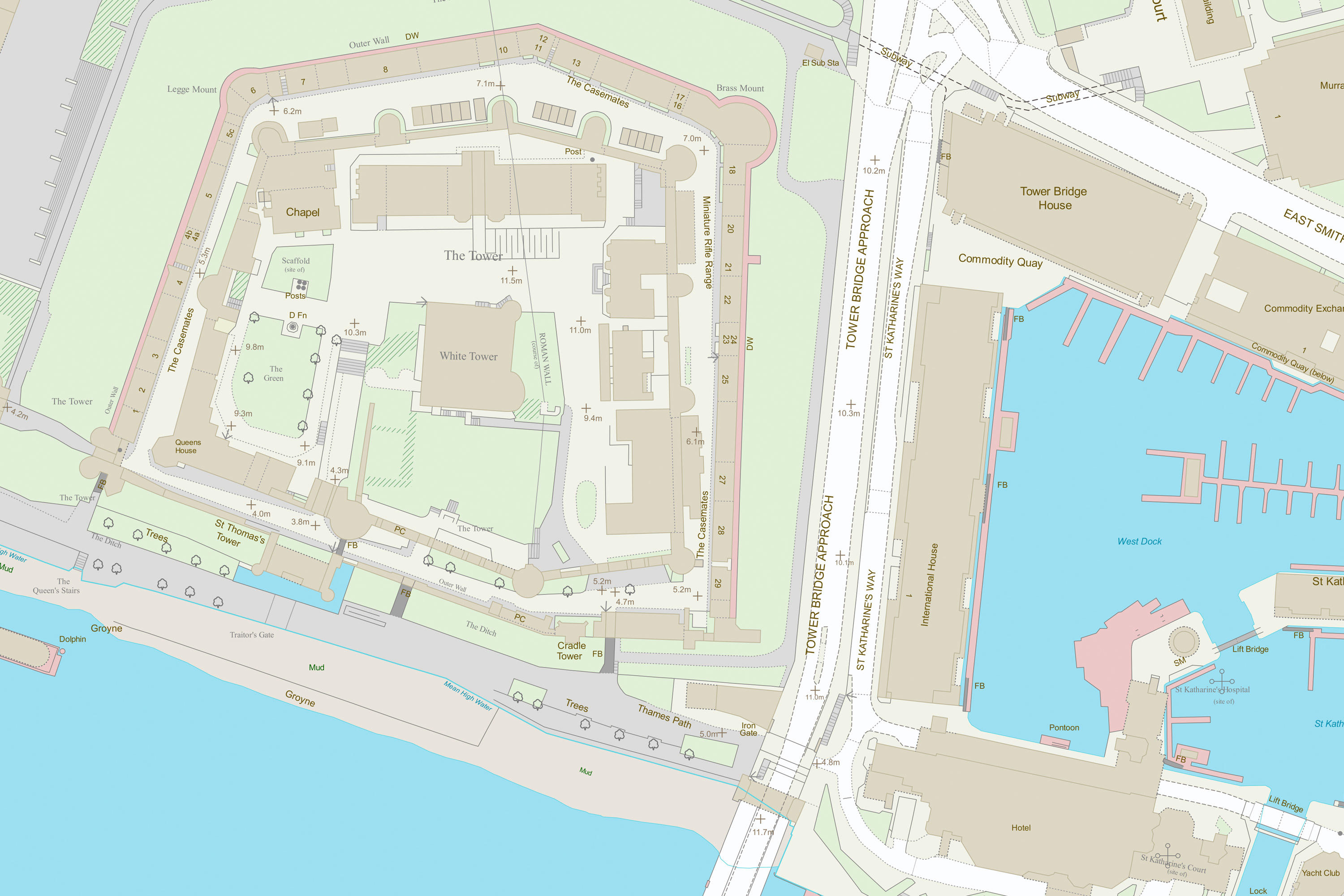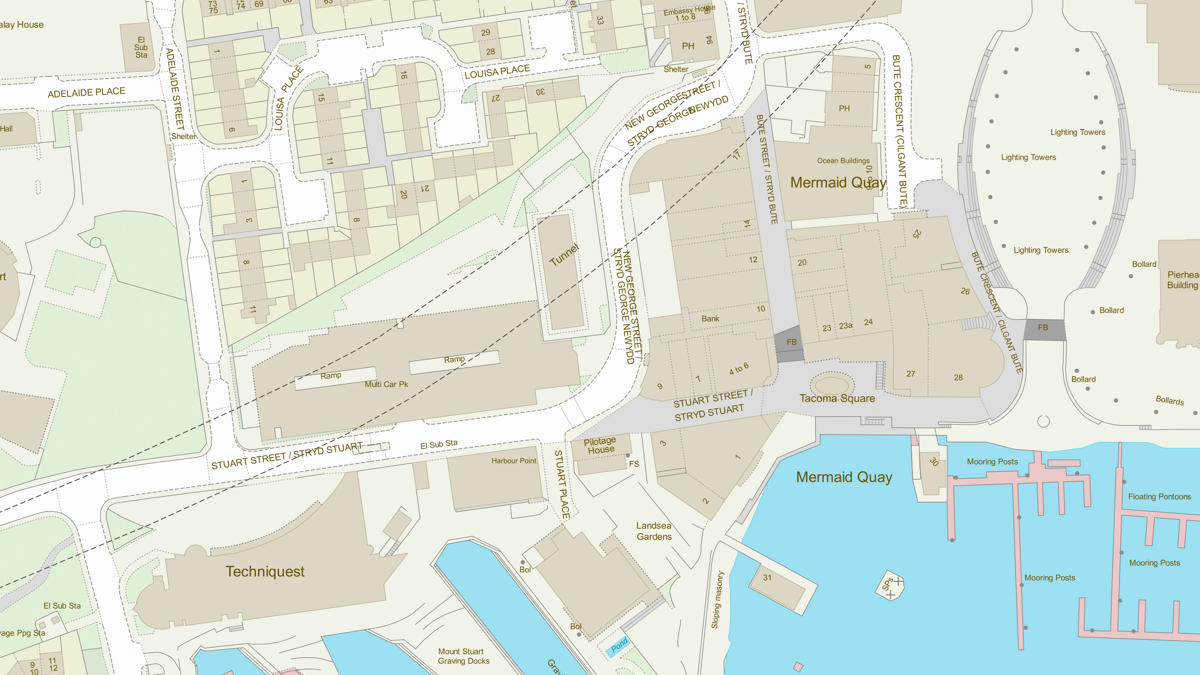Built development – except residential, agricultural or forestry
- A new site of any size represented by topographic area features and/or obscured topographic lines;
- A new site represented by a point feature that is described with a real-world term of Electricity Sub Station, any structure included in our specification that is associated with Utilities, or Wind Turbine if producing electricity primarily or solely for the National Grid;
- A new Wind Turbine captured as a Topographic Area;
- Within an existing site, a new building greater than 0.10 hectares (1 000 m²) in size;
- An extension greater than 0.10 hectares (1 000 m²) in size to an existing building;
- Extension or contraction of an existing site that involves a change of topographic area descriptive group and/or term attribution, where the total area changed is greater than 0.25 hectares. For example a factory site extends into a ‘greenfield' area;Within an existing site, a change of topographic area attribution where the total area changed is greater than 0.25 hectares;
- New or changed proper names for any site (except postal names or numbers of existing individual sites) where such names are represented as cartographic text.
Built development - residential dwellings
- New residential dwellings, including:
- Houses;
- Purpose-built flats;
- Conversions of buildings to permanent residential use that includes changes to Topographic features represented in the data such as boundary features, access roads or changes to proper names represented as cartographic text, for example, agricultural or industrial buildings converted to dwellings);
- Major systematic refurbishment programmes of community housing greater than 0.25 hectares in area, for example, changes to property extents, road layouts, pedestrian accesses and communal areas;
- New or changed proper names for any site (except postal names or numbers of existing individual sites) where such names are represented as cartographic text.
Built development - agriculture or forestry
NOTE: This covers the built infrastructure associated with the activity. For example barns, slurry tanks, timber harvesting plant storage etc.
Areas of land under crop or with growing trees are considered as vegetation, landform and land surfaces.
- A new site greater than 0.25 hectares in extent;
- Extension or contraction of an existing site involving a change in topographic area attribution greater than 0.25 hectares in extent, for example, a farm where hardstanding exceeding 0.25 hectares in area has been built over an area that was previously a field;
- Changes within an existing site involving a change in topographic area attribution greater than 0.25 hectares in extent, for example, a farm where barns, silos and similar structures are built or demolished over an area exceeding 0.25 hectares; and
- New or changed proper names of any site.
Built linear features
- Roads
- All new public roads;
- All new sealed private roads;
- Any change that affects road network lines on existing Department for Transport (DfT) classified roads, other public roads, junctions and sealed private roads;
- Any change that extends for more than 250 m on existing DfT classified roads, including alterations that do not affect road network lines;
- Routing information that restricts the passage of vehicles;
- DfT road numbering – new and changed;
- New or changed proper names of roads.
- Railways
- New railway routes;
- Significant changes to the curtilage of existing railway routes;
- New railway lines (not sidings, points, crossovers and so on) within the curtilage of existing railways.
- Other built linear features
- New or reopened canals;
- New or significantly-changed airport runways and taxiways;
- Electricity transmission lines carried on double poles or pylons.
For supporting sites, such as bus stations, service areas, electricity and so on, see Built development – except residential, agricultural or forestry.
Flood and coastal defences
Sea and non-coastal defences designed to reduce the risk of flooding that extend continuously for more than 100 m.
Coastal zone
Natural erosion and deposition in the coastal zone resulting in a change of alignment of more than 10 m over a length of more than 100 m for the following coastal features when well defined;
- Top and bottom of cliffs; and
- Coastal slope limits.
Vegetation, landform and land surfaces including bounding features
Major landscape changes greater than 25 hectares, for example, landfill, quarries, forestry, reservoirs and coastal changes.



